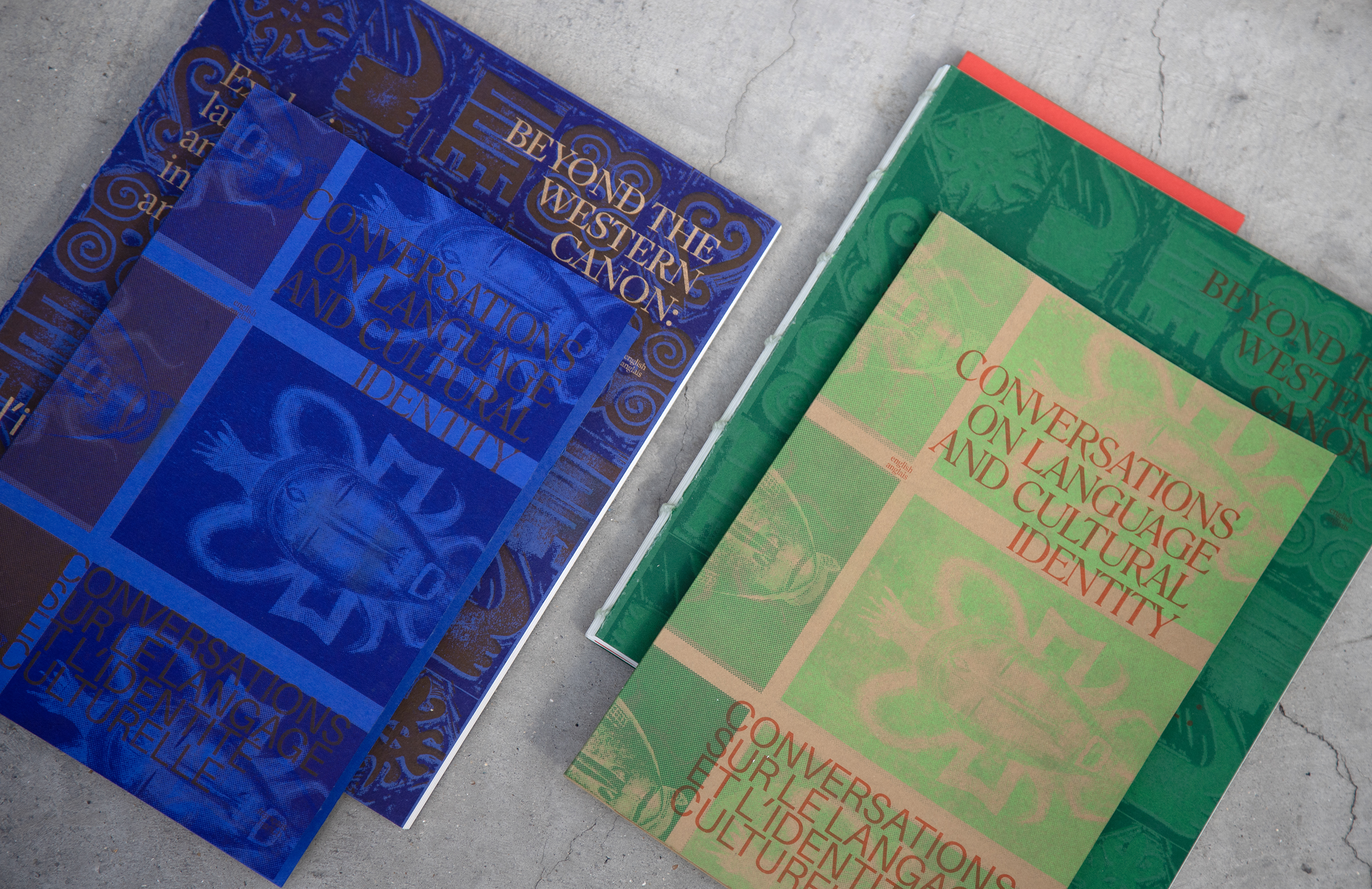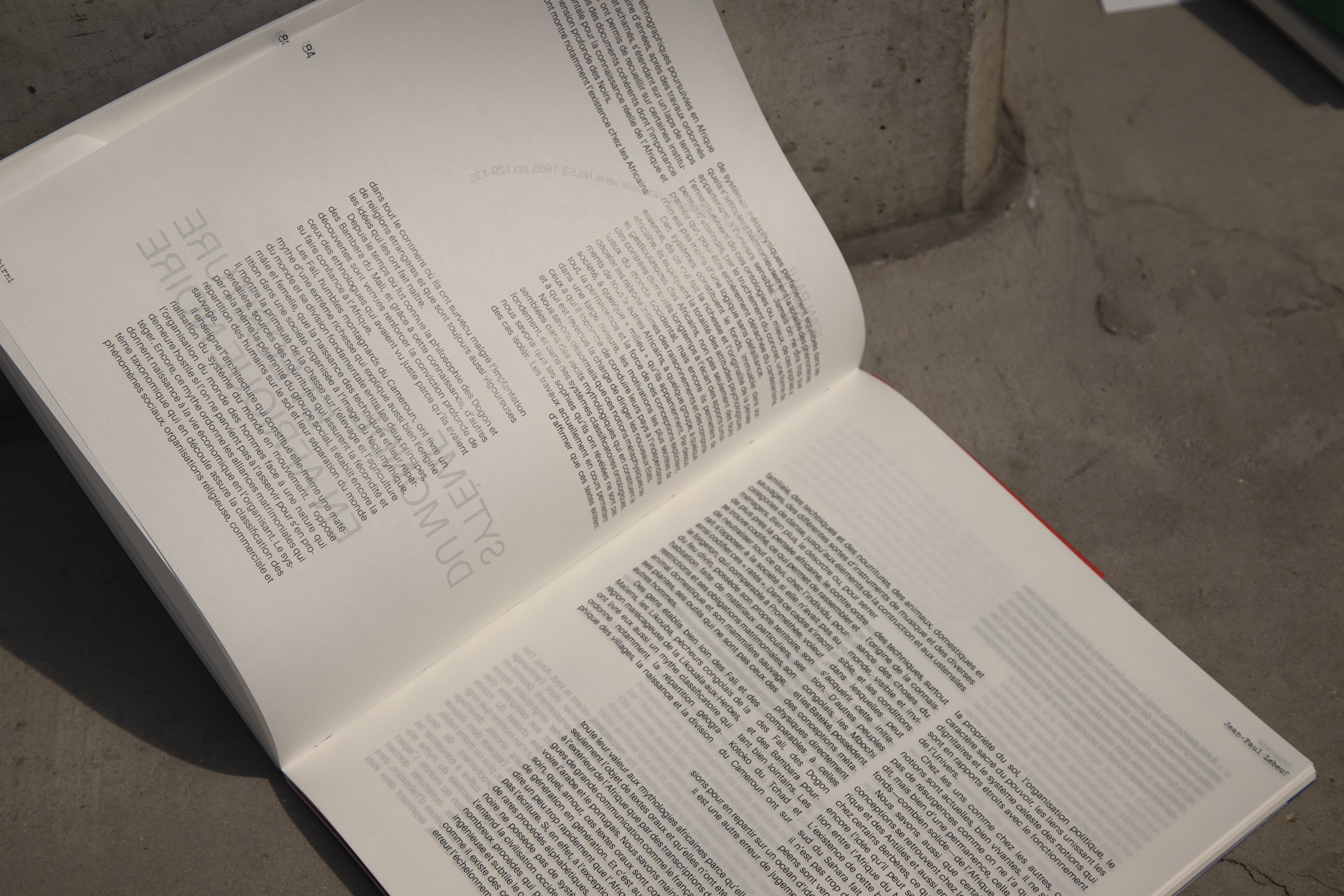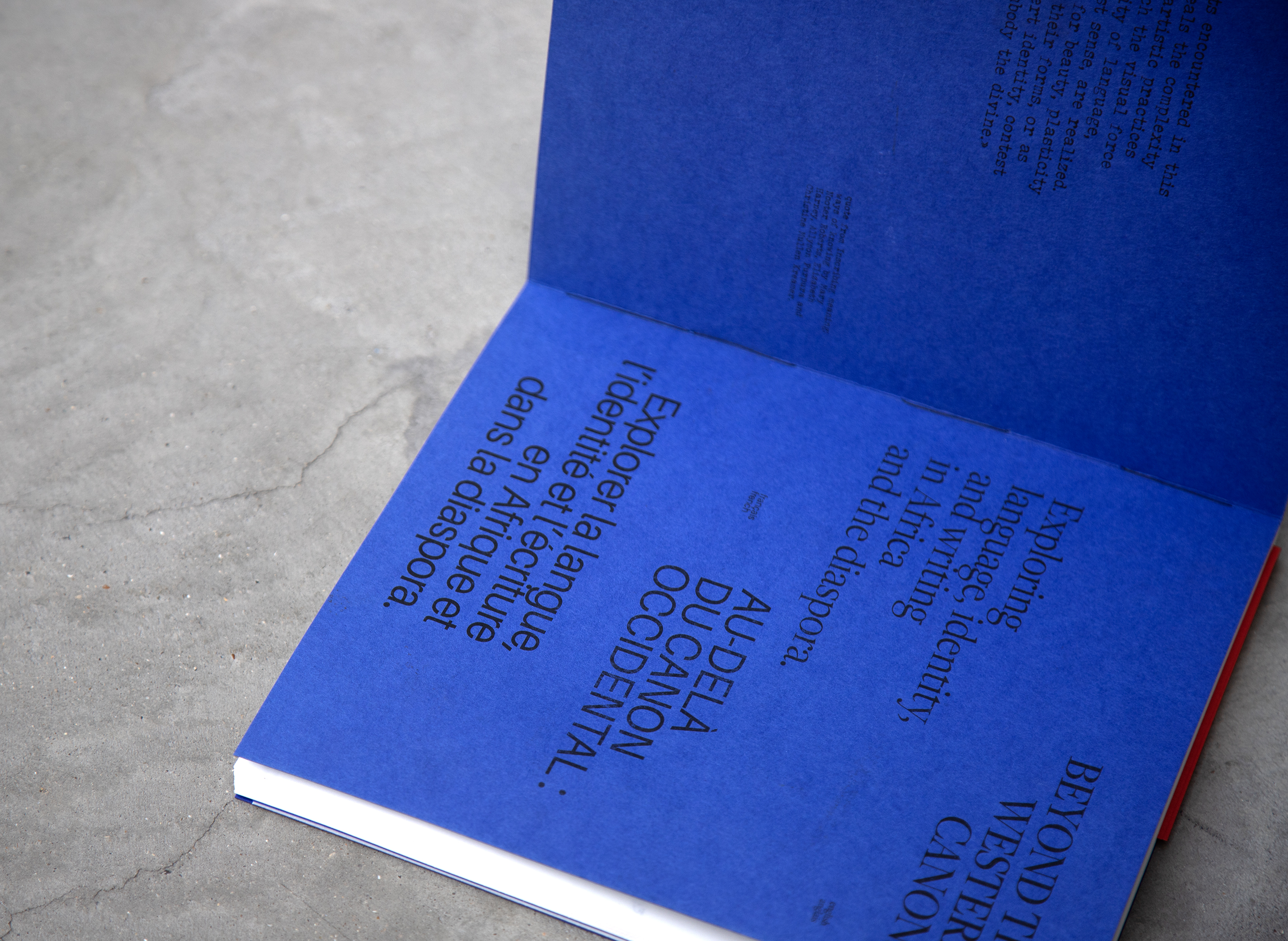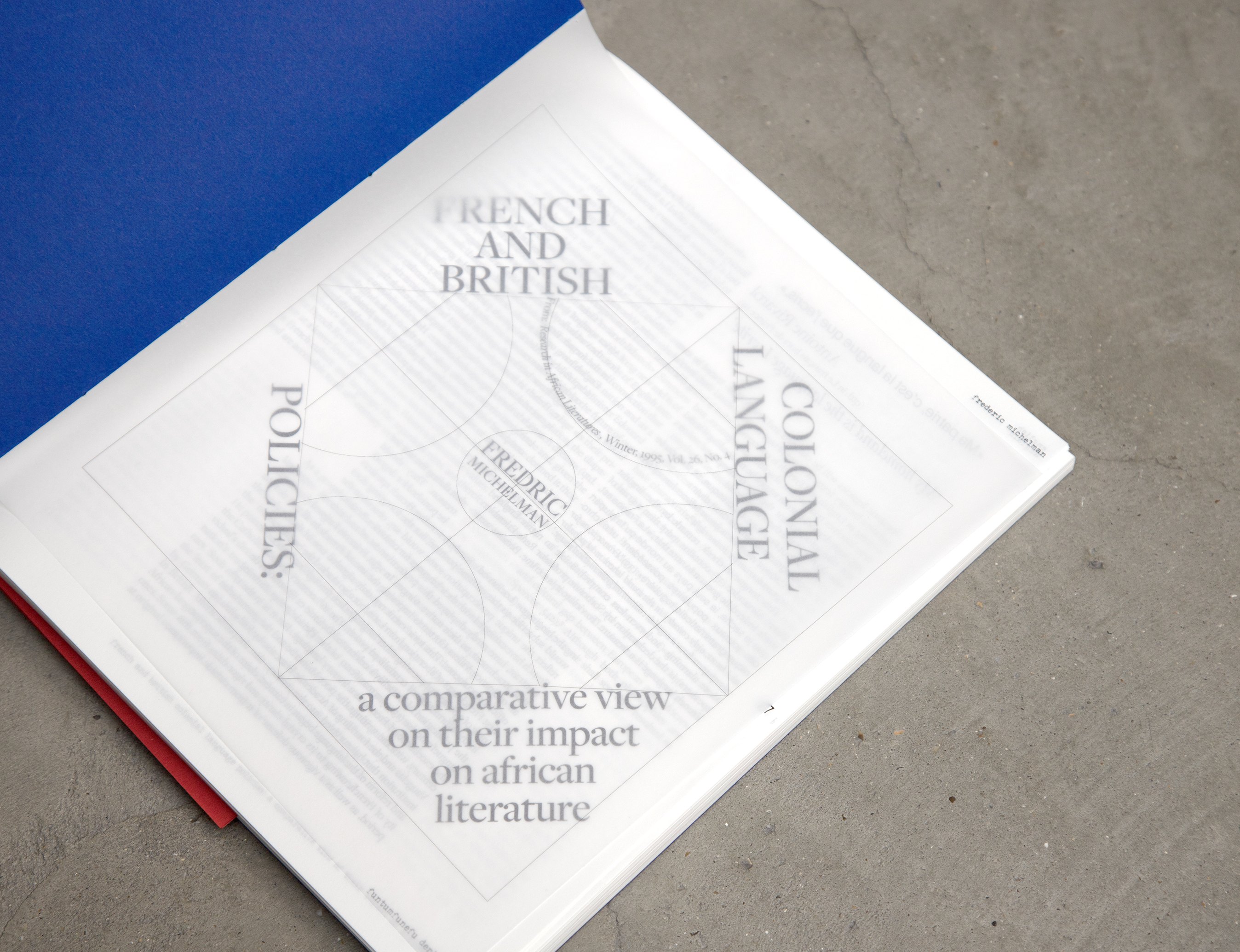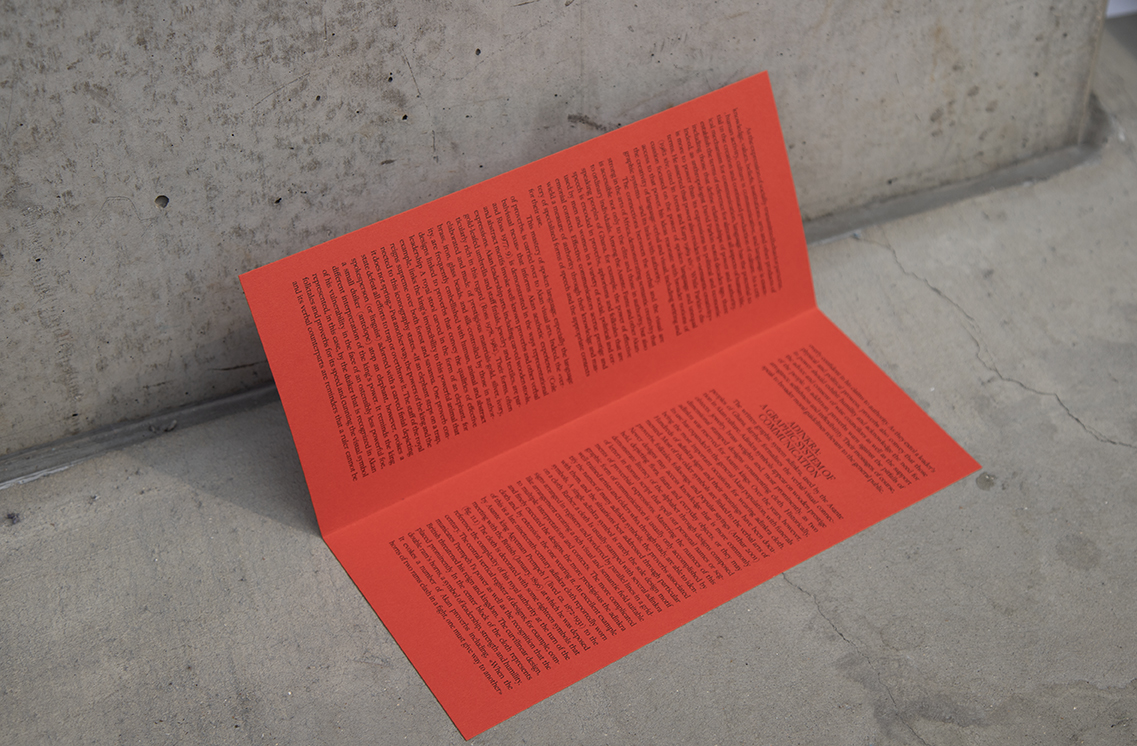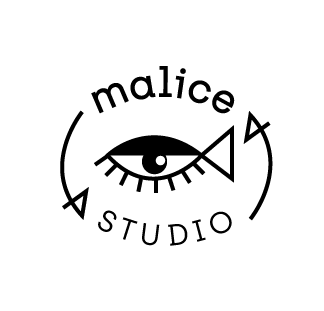Beyond the Western canon: exploring language, identity adn writing in Africa and the diaspora.
For sale
(includes the book + 3 insert booklets)
![]()
For sale
︎︎︎ please email me if you want to order a copy
price: £45
(includes the book + 3 insert booklets)
How to rethink our understanding of the written language and its uses, including typography and layout systems, using indigenous African design systems?
With this enquiry, I have tased myself with not using any reference, influence, or inspiration from the Western canons of design for the second part of the project ‘Beyond the western canon’. The first half of this overall project ‘Conversation on language and cultural identity’ was the premise of this research. These conversations fed the development of this project and the deeper research in theses relationship between language, cultural identity and the written word. This is where the significance of it for the field lies.
The relevance of the enquiry explored through this work, in relation to graphic design lies in the fact that we are in a process of re-discovery. Re-discovering what is graphic design (through typography, layout, typesettings, and the notions of writing and language), re-discovery of new resources, new inspirations, new processes, new ways of doing. I use the word ‘discovering’, however, it might not be the right one. (Re-) defining might be more appropriate. It is not a discovery, or a *re-discovery, in the sense that these resources have always existed.
However, since the current design education system primarily teaches us traditional Western definitions of graphic design, which have framed our positions - these resources have generally been overlooked. This publication offers the understanding that we need to open our field, open our minds and try to break free from the Western canon. It also leans on the importance of research, looking within your culture and your identity to create. I do think that this helps make work that is more meaningful as you, yourself, feel also more connected to the work you’re producing, as the research you do will also you grow as an individual and fuel this quest for identity that I think we are all a part of. It is about re-affirming your identity, your culture, and yourself - especially when it is a culture that has been devaluated. Moreover, the significance of this work also lies in its process, the ‘unseen’, the ‘illegible’, the ‘unwritten’ (following a Western definition of writing). As for this work is a constant back and forth between researches, archives, writings (in all its forms); exploring arts and history, in order to create what it is today. It is exploring how to work with references and inspirations to create something new rather than looking at the surface of things (such as their visual aspect). It is about absorbing, understanding, digesting the concepts and elevated thinking behind them.
Everything is designed for a reason and serves a purpose.
With this enquiry, I have tased myself with not using any reference, influence, or inspiration from the Western canons of design for the second part of the project ‘Beyond the western canon’. The first half of this overall project ‘Conversation on language and cultural identity’ was the premise of this research. These conversations fed the development of this project and the deeper research in theses relationship between language, cultural identity and the written word. This is where the significance of it for the field lies.
The relevance of the enquiry explored through this work, in relation to graphic design lies in the fact that we are in a process of re-discovery. Re-discovering what is graphic design (through typography, layout, typesettings, and the notions of writing and language), re-discovery of new resources, new inspirations, new processes, new ways of doing. I use the word ‘discovering’, however, it might not be the right one. (Re-) defining might be more appropriate. It is not a discovery, or a *re-discovery, in the sense that these resources have always existed.
However, since the current design education system primarily teaches us traditional Western definitions of graphic design, which have framed our positions - these resources have generally been overlooked. This publication offers the understanding that we need to open our field, open our minds and try to break free from the Western canon. It also leans on the importance of research, looking within your culture and your identity to create. I do think that this helps make work that is more meaningful as you, yourself, feel also more connected to the work you’re producing, as the research you do will also you grow as an individual and fuel this quest for identity that I think we are all a part of. It is about re-affirming your identity, your culture, and yourself - especially when it is a culture that has been devaluated. Moreover, the significance of this work also lies in its process, the ‘unseen’, the ‘illegible’, the ‘unwritten’ (following a Western definition of writing). As for this work is a constant back and forth between researches, archives, writings (in all its forms); exploring arts and history, in order to create what it is today. It is exploring how to work with references and inspirations to create something new rather than looking at the surface of things (such as their visual aspect). It is about absorbing, understanding, digesting the concepts and elevated thinking behind them.
Everything is designed for a reason and serves a purpose.
List of the essays used as the content of the publication (in order):
1. French and British Colonial Language Policies: A Comparative view of their impact on African Literature, Friedric Michelman, Research in African Literatures, Winter, 1995, Vol. 26 No.4, Indiana University Press
2. Pan-Africanism and the Language question: Re-reading African Cultural and intellectual History, Kenneth Inyani Simala, 2010
3. The language of African Literature, Ngugi wa Thing’o, 1986 : In The Language, Ethnicity and Race Reader, edited by Roxy Harris and Ben Rampton
4. Système du monde et écriture en Afrique Noire, Jean-Paul Lebeuf, Présence Africaine, Nouvelle Série No.53, pp. 129-135
5. Inscribing meaning,: ways of knowing, Mary Nooter Roberts, Elizabeth Harney, Allyson Purpura and Chritisne Mullen Kreamer
6. African Writing, Text and the Arts: Concepts and definitions, Simon Battestini
7. Nontsikelelo Mutiti on Interrogating the Eurocentric Design Canon, Ksenya Samarskaya, 2019, Eye on design
8. Past + Present = Future? The Potential Role of Historical visual Material and Contemporary Practice in De-Colonising Visual Communication Design Courses, Piers Carey, Durban University of Technology, 2017
9. Exposer la mémoire des symboles, du corps, des images : Le possible vocabulaire des artistes afrodescendant.e.s, Fabienne Bideau,extract from Europa Oxala
10. Europa Oxala - un cadeau pour le futur, extract from from Europa Oxala, Margarida Calafate Ribeiro
1. French and British Colonial Language Policies: A Comparative view of their impact on African Literature, Friedric Michelman, Research in African Literatures, Winter, 1995, Vol. 26 No.4, Indiana University Press
2. Pan-Africanism and the Language question: Re-reading African Cultural and intellectual History, Kenneth Inyani Simala, 2010
3. The language of African Literature, Ngugi wa Thing’o, 1986 : In The Language, Ethnicity and Race Reader, edited by Roxy Harris and Ben Rampton
4. Système du monde et écriture en Afrique Noire, Jean-Paul Lebeuf, Présence Africaine, Nouvelle Série No.53, pp. 129-135
5. Inscribing meaning,: ways of knowing, Mary Nooter Roberts, Elizabeth Harney, Allyson Purpura and Chritisne Mullen Kreamer
6. African Writing, Text and the Arts: Concepts and definitions, Simon Battestini
7. Nontsikelelo Mutiti on Interrogating the Eurocentric Design Canon, Ksenya Samarskaya, 2019, Eye on design
8. Past + Present = Future? The Potential Role of Historical visual Material and Contemporary Practice in De-Colonising Visual Communication Design Courses, Piers Carey, Durban University of Technology, 2017
9. Exposer la mémoire des symboles, du corps, des images : Le possible vocabulaire des artistes afrodescendant.e.s, Fabienne Bideau,extract from Europa Oxala
10. Europa Oxala - un cadeau pour le futur, extract from from Europa Oxala, Margarida Calafate Ribeiro
︎︎︎ designed decisions explained here.
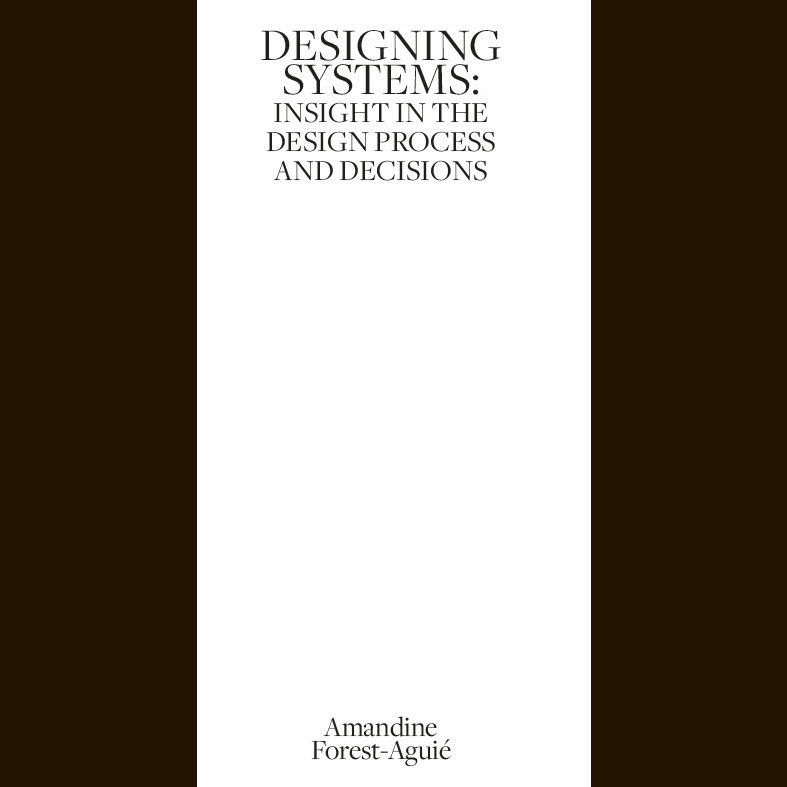
︎︎︎ here more risograph experiments
︎︎︎ 2023

